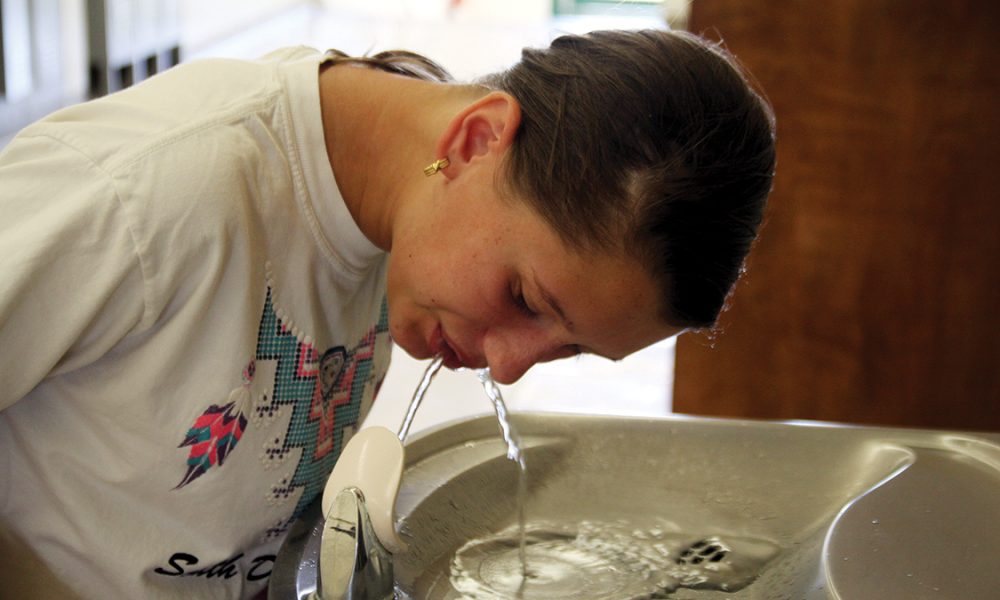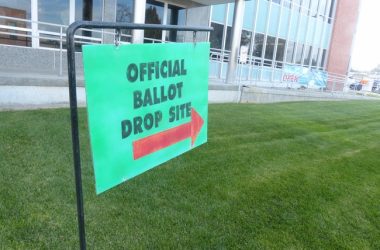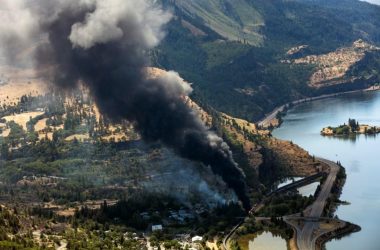
 Vale Middle School student Heather Lamb sips from a fountain at the school Monday. The Vale School District is
Vale Middle School student Heather Lamb sips from a fountain at the school Monday. The Vale School District istesting water sources after one of its other schools – Willowcreek Elementary – had elevated lead levels in 2015. (The Enterprise/John L. Braese)
By John L. Braese
Malheur Enterprise
VALE – The Vale School District is awaiting results of tests for lead that were conducted Aug. 31, as districts across the state examine their water systems for lead problems.
Superintendent Scott Linenberger said 80 tests were ordered for the Vale schools, but about 40 were put on back order because of the high demand.
He said it takes about four to six weeks to get the results back.
Although it’s not a mandate, the state asked local school districts this summer to test for lead in their kitchen taps and other sources of water. While some schools have reported increased levels, others are finding no problems in their water systems.
The Vale district’s lead concerns arose much earlier, when slightly elevated lead levels were reported in the Willowcreek Elementary School water system last year. The tests were done after the plumbing fixtures in the kindergarten, first and second grade rooms were replaced.
The U.S. Environmental Protection Agency sets a limit of 15 parts per billion for lead, and Willowcreek tested at 15.9 parts per billion in September 2015.
“We notified parents right away of the results of the tests,” said Linenberger. “We immediately shut down the two lines affected.”
Willowcreek was one of 10 schools across the state to test above the EPA limit.
Officials say lead enters the drinking system when soft water corrodes the plumbing system, releasing lead from older pipes and fixtures.
The danger is that exposure to lead can lead to a multitude of problems in children, including stomach problems and brain damage. Health officials also warn that children absorb metals like lead at higher rates than adults.
Schools are required to test their water, even those obtaining water from a well.
For Vale, Linenberger said, “The Oregon Health Authority stated testing was not necessary due to being on the city water system.
“When the problems came up in Willowcreek, we decided to conduct testing on both drinking fountains and food prep areas. We are just waiting for the results.”
Future plans are to either replace the affected lines or place an additive into the lines.
“We are taking bids currently to remedy the problem,” he said. “In addition, we have notified parents this year of the problem and posted a notice on the front door to the school.”
“Students are bringing water from home or drinking from other lines in the building,” Linenberger said.
The demand for test kits remains an obstacle.
Linenberger said the test kits ordered in June did not arrive until mid- August and then it was just half the order.
Other local districts also are checking their water quality. Both Nyssa and Ontario school districts have conducted lead tests on their water systems. The Ontario district released tests results in mid-August showing no alarming problems. Testing 31 separate locations throughout the schools, only one, a hand washing station, was found to be above the accepted levels. The testing took samples from drinking fountains, food preparation areas and hand-washing stations. The one problem station tested at 21.3 parts per billion for lead.
The Nyssa district also tested its water, a practice that is completed on a yearly basis. In testing of drinking fountains both inside and outside buildings, none came out above 10 parts per billion.




